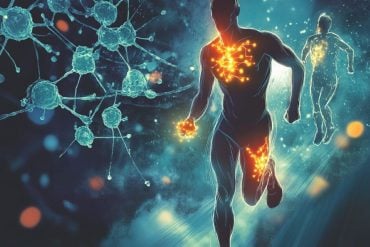Summary: Risk markers for adverse psychological consequences following traumatic injury share similar core similarities across different populations and countries.
Source: University of Pennsylvania
Patients physically recovering from traumatic injury are at risk for experiencing psychological distress, particularly depression and post-traumatic stress disorder (PTSD). Early identification of depression and PTSD risk while under the care of the trauma service is essential to supporting the comprehensive recovery of injured patients.
Predictive screeners provide one effective way to identify those injured patients at the highest risk for the future emergence of post-injury depression or PTSD. By identifying those patients at highest risk of developing significant depression or PTSD after a traumatic injury, follow-up services and resources can be targeted to these patients.
Now, a first-of-its-kind study from the University of Pennsylvania School of Nursing (Penn Nursing) and the Penn Injury Science Center has assessed the performance of two predictive screeners to determine their performance in a population heavily impacted by traumatic injury—urban Black men in the United States.

By using the Penn Richmond Screener and the Posttraumatic Adjustment Scale (PAS)—both developed with different methods and in different countries—researchers have validated the performance of both screeners in predicting the future emergence of depression and/or PTSD. These findings may indicate that risk markers for adverse psychological consequences of traumatic injury share some core similarities across populations and countries.
“The results provide additional support for our ability to identify, during the course of acute trauma care, those patients at highest risk for poor mental health outcomes. This allows trauma programs to target those patients most likely to benefit from follow-up assessments for the emergence of these disorders and to target potentially limited resources appropriately,” says Therese S. Richmond, Ph.D., RN, FAAN, Andrea B. Laporte Professor of Nursing and Associate Dean for Research & Innovation at Penn Nursing, and lead investigator of the study.
About this psychology research news
Author: Press Office
Source: University of Pennsylvania
Contact: Press Office – University of Pennsylvania
Image: The image is in the public domain
Original Research: Closed access.
“Comparison of two screeners predicting the future development of depression and posttraumatic stress disorder in Black men after serious injury” by Trina Kumodzi et al. Injury
Abstract
Comparison of two screeners predicting the future development of depression and posttraumatic stress disorder in Black men after serious injury
Background
To assess the predictive performance of two established, short clinical screeners in predicting the future development of post-injury depression and PTSD.
Methods
This was a prospective, cohort design with a 3-month follow-up. Black adult male trauma patients were enrolled at an urban, Level 1 trauma center. The Penn Richmond Screener and the Posttraumatic Adjustment Scale (PAS) were collected in-hospital. Participants were categorized as depressed using the Quick Inventory of Depressive Symptoms-Self Report and as positive for PTSD using the PTSD Check List – 5 (PCL-5) at 3-months post-discharge. Sensitivity, specificity, PPV and NPV of each screener were calculated. We used receiver operating curve (ROC) analyses to calculate the area under the curve (AUC) with 95% CI to assess predictive performance of each screener.
Results
A cohort of 623 hospitalized, injured Black men were enrolled during acute hospitalization. 503 participants (80.6%) were retained at 3-months and formed the analytic sample. Mean age was 36.8 years (SD 15.4), 53.1% of injuries were intentional; median injury severity score was 9. At 3 months, 35.3% had moderate to severe depression, 32.7% had significant PTSD symptoms, and 22.4% met criteria for both depression and PTSD. Penn Richmond Screener: sensitivity 0.68, specificity 0.56, and AUC 0.62 for PTSD, and sensitivity 0.64, specificity 0.63, and AUC 0.64 for depression. PAS: sensitivity 0.59, specificity 0.73, and AUC 0.66 for PTSD, and sensitivity 0.75, specificity 0.49, and AUC 0.62 for depression.
Conclusions
This study validated the performance of both screeners within the same population, allowing a direct comparison. Two predictive screeners, developed through different methods and in different countries, showed comparable predictive ability. These findings indicate that risk markers for adverse psychological consequences of traumatic injury share some core similarities across populations and countries.







